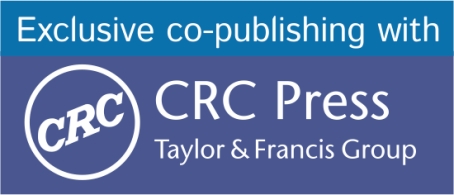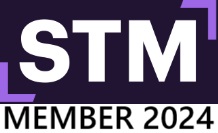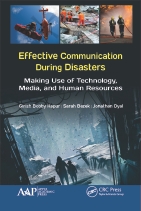|
|
This title includes a number of Open Access chapters. CONTENTS: About the Authors / Editors: Girish Bobby Kapur, MD, MPH Chief of Emergency Medicine, Jackson Memorial Hospital (JMH), Miami, Florida Girish Bobby Kapur, MD, MPH, is the Chief of Emergency Medicine at Jackson Memorial Hospital (JMH) in Miami, Florida, and was recruited in 2015 to bring transformative change in the delivery of high-quality acute patient care at one of the nation’s busiest emergency centers. In addition, Dr. Kapur is launching an academic platform with his colleagues at JMH based on clinical excellence, innovative education, translational research, and public health outreach at the Jackson Health System and the University of Miami Miller School of Medicine. Dr. Kapur is an internationally recognized emergency physician and public health expert who previously served as the Associate Chief for Academic Affairs and the Founding Residency Program Director in the Section of Emergency Medicine and an Associate Professor of Medicine and Pediatrics at Baylor College of Medicine (BCM) from 2009-2015. Based on his international and academic accomplishments, Dr. Kapur was also appointed by BCM President Paul Klotman as the Founding Director of the Center for Globalization at Baylor College of Medicine. For two years, Dr. Kapur helped guide the College’s global initiatives and worked with the BCM faculty, residents, and students to fulfill BCM’s mission to be an international leader in academic medicine. In September 2014, Dr. Kapur led a six-person team that trained nearly 1,500 people in Ebola preparedness and response in Nigeria during the middle of the epidemic in the country. Dr. Kapur was also a co-investigator on the USAID grant “Fighting Ebola: A Grand Challenge” that was one of twelve grants awarded from over 1,500 submissions. Before his roles at BCM, Dr. Kapur directed global health training programs and international projects at the Ronald Reagan Institute for Emergency Medicine at George Washington University (GWU) from 2004-2009. At GWU, Dr. Kapur established multiple academic training programs and acute healthcare systems with partners in India, China, Latin America and the Middle East. In addition, Dr. Kapur implemented a countrywide project to improve emergency services in Turkey that trained more than 2,000 physicians providing emergency care in Turkey’s national hospitals. Dr. Kapur has published multiple peer-reviewed papers and is the senior editor for the first textbook in the field of Emergency Public Health titled Emergency Public Health: Preparedness and Response. Dr. Kapur has served as the Chair of the International Committee for both the American College of Emergency Physicians and the Society for Academic Emergency Medicine. In June 2012, Dr. Kapur was awarded the Order of the International Federation of Emergency Medicine for his contributions to global health and emergency medicine, an honor given to only two US emergency physicians every two years. Sarah Bezek, MD Assistant Professor, Emergency Medicine, Baylor College of Medicine, Houston, Texas Sarah K. Bezek, MD, is an Assistant Professor in the Department of Medicine and Section of Emergency Medicine at Baylor College of Medicine in Houston, Texas. She is a graduate of Texas Tech University Health Sciences Center and trained in Emergency Medicine at Yale University. She has been practicing emergency medicine as a board-certified physician working predominantly with underserved populations. She is on faculty at the National School of Tropical Medicine in Houston, Texas, with special emphasis on education, acute care and trauma in low/middle income countries, and neglected diseases of poverty. She has given lectures both locally and internationally regarding emerging infectious diseases. She has also worked on research in the area of new malarial diagnostics. She has been awarded for her work with mentorship and medical student education. Jonathan Dyal, MD, MPH Emergency Medicine Resident, Baylor College of Medicine, Houston, Texas Jonathan Dyal’s interest in disaster response began while studying emerging infectious diseases at Stanford University. His commitment to emergency disaster management was solidified by medical relief trips to Bolivia, Ghana, Tanzania, and Uganda. Dr. Dyal began his career in international disaster response by pursuing his MD at Johns Hopkins University School of Medicine. While enrolled at Johns Hopkins, he worked with the distinguished faculty of the Center for Global Health to conduct research in Pune, India, on Cryptococcal Meningitis. Before beginning his clinical training, he earned his Master’s in Public Health at the Johns Hopkins University Bloomberg School of Public Health. His thesis focused on the origins of an outbreak of syphilis among high risk groups around Lake Victoria. After graduating from the School of Public Health, Dr. Dyal was awarded a Doris Duke Global Health Fellowship. As a Doris Duke Fellow, he spent a year studying emerging zoonotic diseases and viral hemorrhagic fevers in Uganda. During this time he also enrolled in the University of Minnesota’s Global Health Course. In addition to studying disaster management in low resource settings, this experience prepared him to pursue a Certificate in Tropical Medicine, which was awarded by the American Society for Tropical Medicine and Hygiene in June 2015. Dr. Dyal is currently an Emergency Medicine resident at Baylor College of Medicine, Houston, Texas. As a resident, Dr. Dyal has collaborated with many of the global health and disaster management faculty at Baylor. He has published several articles on emerging infectious diseases, including Chikungunya virus and leptospirosis. Upon graduation, his future plans include working with the Center for Disease Control’s Epidemic Intelligence Service and a Disaster Medicine Fellowship in Emergency Medicine. |

 Follow us for the latest from Apple Academic Press:
Follow us for the latest from Apple Academic Press:
New Book Series: AAP Series on Waste Biomass Valorization will explore the transformation of biomass resources into valuable products, addressing the growing need for sustainable alternatives to fossil fuels and non-renewable resources. This series sits at the intersection of environmental science, renewable energy, and sustainable development, highlighting the potential of biomass conversion technologies to mitigate climate change, reduce waste, and foster economic growth. By converting biomass waste streams into biofuels, bioproducts, and bio-based materials, this series seeks to offer innovative solutions to pressing environmental and societal challenges. For more information and to propose a book, please visit: Click here
Congratulations to Hafiz Ansar Rasul Suleria, PhD, for receiving the Dean’s Award for Excellence in Research from the University of Melbourne, Australia, in recognitation for his exceptional performance and strong commitment to advanced research in food science. Dr. Suleria is editor of AAP’s book series Innovations in Plant Science for Better Health: From Soil to Fork. For more information, visit: Click here Congratulations to Dr. Christian Mancas. His book Conceptual Data Modeling and Database Design: A Fully Algorithmic Approach was one of the 6 Best Data Modeling ebooks for Beginners by BookAuthority, a leading site for book recommendations. For more information, visit: Click here Announcing a new book series: AAP Insights in Women’s and Gender Studies: Reshaping Identities is on a mission to revolutionize the conversation around gender, identity, and societal dynamics. The series aims to bridge the gap between academic rigor and practical application, providing tools that empower educators, researchers, students, and activists to spark change and advance the cause of gender equality around the world. For more information, visit: Click here AAP Editor & Author Dr. Wasim Siddiqui to Lead the World Food Preservation Center, USA AAP congratulates Professor Mohammed Wasim Siddiqui on this new and prestigious appointment. In this role, he directs the planning, development, and implementation of plans within the organization, which is dedicated to reduction of postharvest food loss and wastage. Dr. Siddiqui will also originate and promote existing initiatives of the sister universities and institutes of the World Food Preservation Center® LLC. Dr. Siddiqui is editor of two book series with AAP. For more information, visit: Click here Announcing a new AAP book series: Perspectives and Anthropology in Tourism and Hospitality (PATH) For more information, visit: Click here The new AAP book series Innovations in Microbiology welcomes book proposals. For more information, see: Click here COMMENTS FROM AAP EDITORS AND AUTHORS AAP book title: Advances in Audiology and Hearing Science (2-volume set) “I have collaborated with AAP during the process of bringing my two-volume editing work " Advances in Audiology and Hearing Science" to a final publishing phase. Despite the fact that the book brought together 41 different authors (with very different writing styles), AAP support has been truly important throughout the initial and final stages of the book. While the majority of the publishing work is done at the early stages, the final touches that include the last-minute corrections of the authors are extremely crucial to the quality the book tries to convey. The assistance of AAP during the last stages of corrections and communication with the authors was a very positive contributor to my state of mind during those stressful moments. I recommend the publishing experience with AAP to other editors of scientific material.” —Stavros Hatzopoulos, PhD, Hearing Science Laboratory, University Hospital of Ferrara, Ferrara, Italy AAP book title: Nanotechnologies: The Physics of Nanomaterials (2-volume set) “As the author of a two-volume book on nanotechnologies, I was very pleased with the interaction and support of the team at Apple Academic Press. They provided me with regular and useful information and updates throughout the publishing procedure. I am also very happy with the final product, which is of good quality. The books are now available and are professionally distributed through the various channels. I would like again to thank the team at AAP for all their hard work and support.” —David Schmool, PhD, Director, Groupe d’Etude de la Matière Condensée GEMaC, National Centre for Scientific Research, Université de Versailles/Saint-Quentin, Université Paris-Saclay,Versailles, France AAP book title plus many others: Physiology of Molluscs (2-volume set) “Since my first recent association, I have enjoyed the full benefit of support, encouragement, and kindness from the members of AAP I have had the pleasure of being associated with. In the same vein, I hope AAP was satisfied with the book series I have edited in advancing the knowledge. It has been a great journey and was a great pleasure and satisfaction. Advancing scholarship through publications is one of the best routes publishers can take, and I would hold AAP as one of the best ones.” —Saber Saleuddin, PhD, University Professor Emeritus, Department of Biology, York University in Toronto, Ontario, Canada AAP book title plus many others: Green Chemistry and Sustainable Technology: Biological, Pharmaceutical, and Macromolecular Systems “It had been my pleasure to work with the production team of Apple Academic Press for almost a decade. The best presentation of our work was due to their hard work and with careful scrutiny. I am sure that every one of them takes extra pains to publish the book nicely, maintaining the quality and timeliness. It was a rewarding experience to work with AAP. I would like to publish more with AAP on my upcoming projects in future also.” —Prof. Suresh C. Ameta, Professor of Eminence (Distinguished Professor), Faculty of Science, PAHER University, UDAIPUR, India AAP book title: New Frontiers in Nanochemistry, 3-volume set, plus many others "Publishing a book, either as author or editor, is a journey from the initial vibration to the piece of knowledge towards the present future of humanity at large. Such a journey is about climbing and tunneling, about diving and driving through, about inspiration and tuning, about hard working in every instance; and it is also about time. Very few Global Publishers have the wisdom and patience and kindness and openness to authors, contributors, and readers while being truly crafting oriented as Apple Academic; yet all is about people and their education, vision and assumed mission; the Apple Academic Team heartily succeed that in achieving the world class scholarly acclaim by the quality involvement in all chain of plus value added with each publishing event. Hearty Compliments! Excelsior Apple Academic!" —Mihai V. Putz, PhD, Dr.-Habil., MBA, Professor, Faculty of Chemistry, Biology, Geography, Laboratory of Computational and Structural Physical Chemistry for Nanosciences and QSAR, West University of Timi?oara; PI-1, Laboratory of Renewable Energies - Photovoltaics, National Research and Development Institute for Electrochemistry and Condensed Matter (INCEM), Timi?oara, Romania AAP book title: The Chemical Century: Molecular Manipulation and Its Impact on the 20th Century “All my experiences with AAP have been very positive. I entrusted AAP with the publication of The Chemical Century: Molecular Manipulation and Its Impact on the 20th Century and found the quality of the book that they produced to be excellent. My two contacts at the company were very responsive and efficient throughout the publication process.” —Richard J. Sundberg, PhD, Professor of Chemistry, University of Virginia, Charlottesville, Virginia, USA AAP book titles: Medical Tourism and Wellness: Hospitality Bridging Healthcare (H2H)© and Medical Travel Brand Management: Success Strategies for Hospitality Bridging Healthcare (H2H) “I have enjoyed my scholarly creative work with Apple Academic Press. They have been timely, creative, and very helpful for my two books with them. I encourage you to consider publishing your work with AAP.” —Frederick DeMicco, PhD, RDN, Executive Director and Professor School of Hotel and Restaurant Management, Northern Arizona University, Flagstaff, Arizona AAP book title: Coping with Biological Growth on Stone Heritage Objects: Methods, Products, Applications, and Perspectives “It was a wonderful day when, some years ago, AAP accepted to publish the book on which I’ve been working for years. My experience was very good and confirms that AAP is a publisher of quality and looks for quality books. Everyone on the AAP team gave me the utmost care for which I will always be grateful. They took the time to discuss my proposal. This meant transforming some aspects and changing the proposal, but it made for a stronger and better book. I really appreciated the team members for outstanding performance and the skills they used to achieve that performance. I am very thankful for their help and effort, for their professional guidance and assistance.” —Daniela Pinna, Department of Chemistry, University of Bologna, Italy AAP book title: The Chemical Evolution of Phosphorus: An Interdisciplinary Approach to Astrobiology “I’m very pleased with the books you have edited. It shows a very good and careful work by everyone involved along the whole production process, and so the final result is a beautiful piece: it has come out as a very nice and appealing book, easy to handle and read, .... and hopefully of interest for people from diverse related fields!” —Enrique Macia-Barber, PhD, Professor of Condensed Matter Physics, Universidad Complutense de Madrid, Spain |



